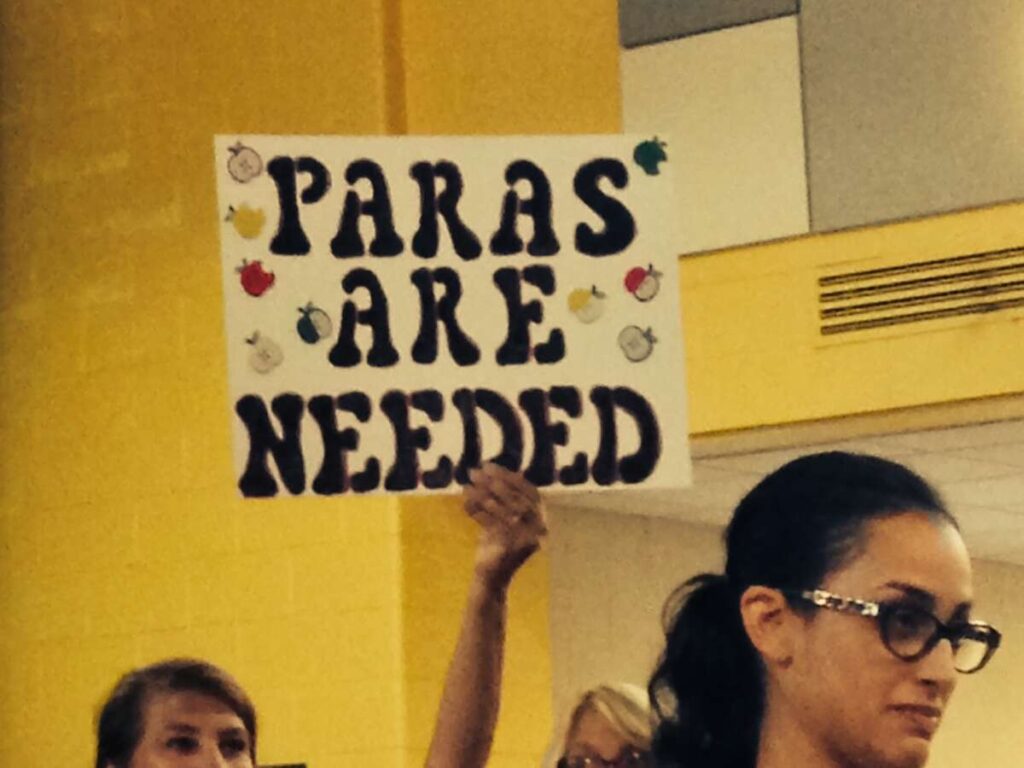Sam Murphy
March 24, 2023
I am so happy that my two children, who are neurodiverse, attend a San Francisco public school. They joyfully run through the gates to start their school day.
But truth be told, they have nowhere else to go.
Many of my peers send their kids to expensive small-class-size “progressive” private schools. While that might work for some, it does not for most parents of children with disabilities. After one of my kids was kicked out of private preschool because of their disability, I was done with that discrimination game.
That said, while my family and kids are eternally grateful for the incredibly caring and dedicated teachers and staff at our local public school, students seem to be in constant catch-up mode since the life-saving pandemic closures, and our teachers are in burnout mode.
Here’s the problem: The San Francisco Unified School District is woefully underfunded. Schools are short about 600 teachers, hundreds of special educators and about 200 paraeducators — who, by the way, earn a starting salary of about $18 per hour, barely minimum wage. School psychologists have double the recommended caseload and there are not enough substitutes.
This is solvable.
All students should get the high-quality education they are legally entitled to and need to succeed. It doesn’t take a genius to figure out why San Francisco has a school staffing crisis: Educators aren’t paid competitive or livable wages and are plucked by better-paying school districts.
Inclusion is a priority at most San Francisco public schools, for which I am grateful. About 95% of students with individual education plans — a map that lays out the program of special education instruction, support and services kids need to make progress and thrive — spend their time in a general education class.
But San Francisco schools still fall way short of fully funding inclusion. We have to do better.
When there isn’t a paraeducator available, things can get unsafe and chaotic. Students who are struggling emotionally or academically rely on them. Paraeducators are lifelines for teachers and students, and without them, the whole class suffers.
When teachers are sick or are away taking necessary professional development training, problems mount. There aren’t enough substitutes to cover the classes. I have had to pull my kid for safety reasons when there wasn’t a well-trained substitute. That’s a lost day of education. I’ve also had to chaperone field trips at the last minute because there was no available paraeducator for my child. I’ve been called to pick up my child when there is a meltdown because there was no staff available to help. Recently, our special education teacher missed a literacy training for dyslexic students because she had to cover for a sick paraeducator. This training is necessary because up to 20% of any given classroom is dyslexic. The current staff is desperately trying to plug holes.
Enough with this martyrdom model of employment.
The district simply does not have the warm bodies to fulfill its legal, and arguably moral, obligations. Many times, my child’s individual education plan has been out of compliance. I could have sued the district to send my kid to a private school for disabled children in Marin County, at a cost to the taxpayer of over $35,000 a year in transportation and tuition.
But I didn’t. I don’t judge those parents who have. But I still continue to push within our public school system.
I happen to be one of the lucky ones. I am really stubborn, good at navigating systems, networking and researching, and I’m a respectful collaborator to ensure my children are as well supported as they can be. But the work of advocating at my school site and the district is the equivalent of a second job. Others in my community have language barriers and socioeconomic situations making it more difficult for them to navigate.
I don’t want to create a disability narrative of pity. I am trying to convey a systematic problem that puts an undue burden on educators, students and many parents. The special education community has too many horror stories from parents with children with disabilities. It is a constant struggle to get what their children are entitled to receive by law.
A well-funded school for a child with disabilities isn’t all that different than for general education students: There are enough teachers to avert large class sizes, there is a paraeducator in at least every class in the lower grades, enough school psychologists to meet students’ growing need for mental health services, safe schools that invest infrastructure and time for all educators to collaborate. And, most important, educators are paid competitive wages to recruit and retain them.
Advocacy, begging and cajoling by parents and educators haven’t worked to fix the staffing shortage and other serious issues. Improvements and long-term investments have to be hammered out in negotiations between the United Educators of San Francisco and the school district.
I write this not for my kids alone, but for everyone’s child in public school. Too many kids are falling through the cracks.
Sam Murphy is a proud public school parent and a member of the San Francisco school district’s Community Advisory Committee for Special Education. The opinions are of the writer and don’t represent the advisory committee.
